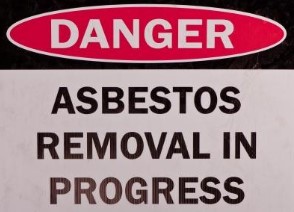It’s good to know that asbestos is no longer used in the construction business – as a matter of fact, it has been banned since 2000. For good reason, in fact: asbestos creates a serious health problem. Asbestos is a hazardous material because small fibres, when exposed to the open air, can get carried around. When inhaled, these fibres can cause serious damage to our biological system – asbestos has been correlated with cancer, pulmonary diseases, and death.
Short-term exposure may not harm you at all, but continuous exposure surely will. It’s a real concern – a concern to any owner, renter, or person working in a building. Here’s what you should know about the risks associated with asbestos – and when you should be extra careful.
Refurbishment, construction, and renovation
<2016/12/What-You-should-Know-about-the-Risks-Associated-with-Asbestos-–-and-when-You-should-be-Careful.jpg"> Exposure to asbestos happens most often in the following circumstances:
Exposure to asbestos happens most often in the following circumstances:
- There are renovations or construction in a property built before the year 2000.
- No risk assessment has been done before renovation or construction is about to begin.
- The people performing the renovation or construction do not have any training or knowledge about asbestos and how to handle the hazards in a safe way.
- The people performing the renovation or construction have been trained to work with asbestos but neglect to take proper precautions.
You are at risk when:
The following people are often at risk the most:
- Carpenters, joiners, and plumbers who need to remove or break walls
- Heating and ventilation engineers or repairmen
- Painters and decorators
- Architects, purveyors and other building professionals
- Roofing contractors, as well as people working with insulation
Points to note when it comes to asbestos
It’s important to remember that asbestos:
- Cannot be seen or smelled in the air
- Has effects that are not immediately noticeable
- That people who smoke are at a higher risk
- That there is no problem as long as the asbestos is located in a safe place
Here’s the positive news: there are simple things that you can do. There are plenty of surveyors out there who are willing to give your home or property a look – in fact, they may even decide to call in an expert on asbestos reports. This is truly the wise thing to do: not only does it allow you to find a problem (if there is one), it allows you to deal with it before the problem ever gets out of hand. And financially speaking, getting rid of a problem and having your property declared, in official terms, as asbestos-free, is something every responsible property owner should do – it makes financial sense. It’s about safety, welfare – and it makes economic sense as well.
Image attributed to Michelle Meiklejohn/FreeDigitalPhotos.net
http://www.freedigitalphotos.net/images/Manufacturing_and_in_g199-Asbestos_Sign_p11770.html